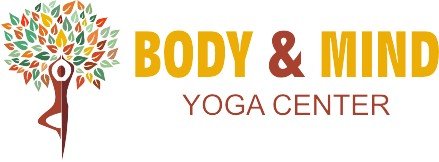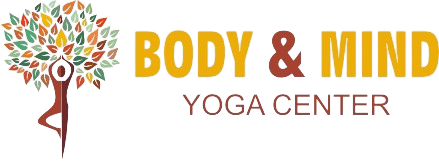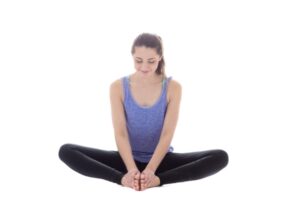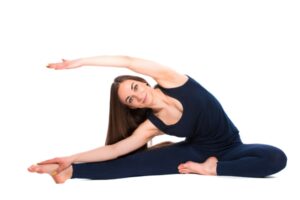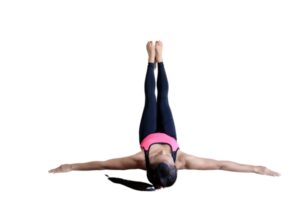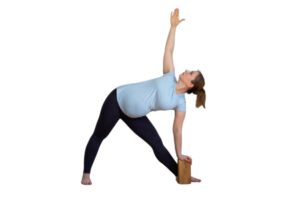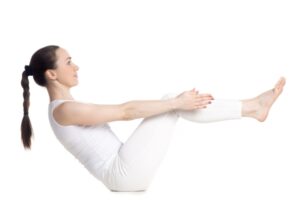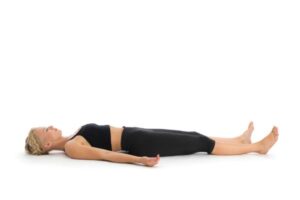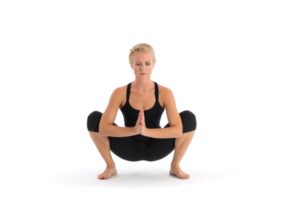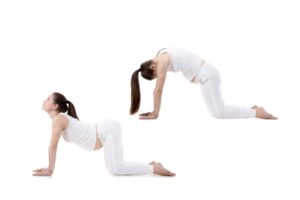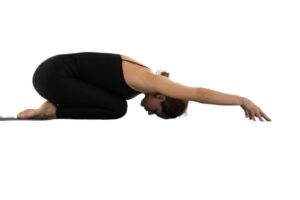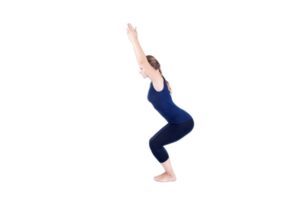Embarking on the transformative journey of pregnancy introduces a myriad of physical changes, prompting the need for nurturing practices. Prenatal yoga emerges as a gentle yet powerful ally, especially in the pivotal third trimester. This blog explores five carefully curated yoga poses tailored for expectant mothers during this phase. From promoting flexibility to fostering relaxation, each pose contributes to a positive pregnancy experience.
What Are the Benefits Of Yoga In The Third Trimester?
In the third trimester of pregnancy, practicing yoga offers numerous benefits for both mother and baby. Gentle yoga poses and breathing exercises reduce stress, enhance flexibility, and alleviate back pain. Yoga promotes relaxation, aiding in better sleep and easing discomfort associated with pregnancy. Additionally, it strengthens the pelvic floor muscles, preparing the body for labor. The mindfulness cultivated through yoga helps mothers connect with their changing bodies and fosters a sense of calm, contributing to a positive pregnancy experience.
Prenatal Yoga Poses for Third Trimester of Pregnancy
1. Butterfly Pose (Baddha Konasana):
Butterfly Pose, or Baddha Konasana, involves sitting with the soles of the feet together, creating a diamond shape with the legs. Holding the feet, practitioners gently flap the knees, resembling the movement of butterfly wings.
How to Do It:
- Sit with a straight spine and bring the soles of your feet together.
- Hold your feet with your hands, keeping your elbows on your thighs.
- Gently flap your knees up and down, encouraging a comfortable opening in the hips.
Benefits:
Butterfly Pose helps in opening the pelvis and stretching the inner thighs, promoting flexibility and comfort during pregnancy. It can also aid in relieving tension in the lower back, offering a gentle way to enhance pelvic mobility.
2. Half-Butterfly Pose (Ardha Baddha Konasana):
Half-Butterfly Pose, or Ardha Baddha Konasana, is a seated yoga pose that involves extending one leg straight while bending the other leg with the sole of the foot against the inner thigh. This asymmetrical posture provides a deep stretch to the extended leg’s inner thigh and hamstring.
How to Do It:
- Sit with a straight spine and one leg extended straight.
- Bend the opposite leg, placing the sole against the inner thigh of the extended leg.
- Fold forward, reaching toward the toes of the extended leg while keeping the back straight.
Benefits:
Ardha Baddha Konasana helps alleviate tightness in the hips and hamstrings, common discomforts during pregnancy. The pose also encourages gentle stretching without straining, making it a suitable option for maintaining flexibility and easing tension in the lower body.
3. Legs-Up-the-Wall Pose (Viparita Karani):
Legs-Up-the-Wall Pose, or Viparita Karani, is a restorative yoga posture where practitioners lie on their backs with legs extended up against a wall. The body forms an L-shape, promoting relaxation and gentle inversion.
How to Do It:
- Sit with one side against a wall.
- Swing the legs up the wall while lying on your back.
- Rest the arms by your sides or place them on the belly for added relaxation.
Benefits:
Viparita Karani helps reduce swelling in the legs and feet, common in pregnancy. The mild inversion encourages blood circulation, providing relief from leg discomfort and promoting relaxation for expectant mothers. The pose is safe and soothing, making it an ideal choice during pregnancy.
4.Triangle Pose (Trikonasana):
Triangle Pose, or Trikonasana, is a standing yoga posture that involves extending the legs wide apart, reaching towards one foot with one hand while the other arm extends upward. The body forms a triangular shape, emphasizing lengthening and opening through the torso.
How to Do It:
- Begin in a wide-legged stance.
- Turn one foot out and extend the arms parallel to the floor.
- Reach towards the front foot with one hand while the other arm extends upward, creating a straight line from fingertips to fingertips.
Benefits:
Trikonasana helps improve balance and strengthen the legs, providing stability during pregnancy. The gentle stretch along the sides of the torso may alleviate back pain and discomfort. Additionally, the pose encourages better posture, which is beneficial for pregnant individuals experiencing changes in their center of gravity.
You May Like to Read : 10 Prenatal Yoga Poses For First Trimester Of Pregnancy
5. Boat Pose (Navasana):
Boat Pose, or Navasana, is a core-strengthening yoga posture where practitioners sit on the floor, balancing on their sitting bones, and lift their legs and upper body to form a V-shape. This asana engages the abdominal muscles and requires balance and concentration.
How to Do It:
- Sit on the floor with legs extended.
- Lean back slightly, lift the legs, and balance on the sitting bones.
- Extend the arms parallel to the ground, maintaining a straight spine.
Benefits:
Navasana helps strengthen the core muscles, providing support to the spine and promoting better posture during pregnancy. It also engages the pelvic floor muscles, which can be beneficial for labor and postpartum recovery. However, pregnant individuals should modify the pose as needed, avoiding strain on the abdomen. Consulting a healthcare professional or a prenatal yoga trainer is advisable.
6. Shavasana (Corpse Pose)
Shavasana, or Corpse Pose, is a restorative yoga pose that provides deep relaxation to the body and mind. During the third trimester, it’s essential to modify this pose to ensure comfort and safety.
How to Do It:
- Lie on your left side with a bolster or pillow between your knees to support your belly.
- Keep your body aligned and relax completely, allowing each muscle to release tension.
- Focus on your breath, inhaling deeply and exhaling slowly, to calm your mind.
Benefits:
Shavasana promotes deep relaxation and stress relief, which is crucial for managing the physical and emotional changes of pregnancy. It helps reduce fatigue and can improve sleep quality. This pose also encourages mindfulness, allowing you to connect with your baby and prepare mentally for labor.
7. Garland Pose (Malasana)
Garland Pose, or Malasana, is a deep squat that helps open the hips and stretches the lower back. It’s particularly beneficial during the third trimester as it prepares the body for childbirth.
How to Do It:
- Stand with your feet slightly wider than hip-width apart, toes pointing outwards.
- Slowly lower into a squat, bringing your hips close to the ground.
- Keep your hands in prayer position at your chest, pressing your elbows against your knees to open the hips further.
- Maintain a straight spine and hold the pose while breathing deeply.
Benefits:
Garland Pose opens the hips and stretches the lower back, which can alleviate discomfort and improve flexibility. It strengthens the legs and helps prepare the body for labor by promoting a more open pelvis. Additionally, this pose enhances balance and supports the lower body during pregnancy.
8. Cat-Cow Pose (Marjaryasana-Bitilasana)
The Cat-Cow Pose is a gentle flow between two poses that warm up the spine and release tension. It’s especially soothing during the third trimester as it helps alleviate back pain and promotes better posture.
How to Do It:
- Start on your hands and knees in a tabletop position, with wrists aligned under shoulders and knees under hips.
- Inhale, arch your back (Cow Pose), and lift your head and tailbone towards the ceiling.
- Exhale, round your back (Cat Pose), and tuck your chin towards your chest, drawing your belly in.
- Repeat this flow, synchronizing your movement with your breath.
Benefits:
Cat-Cow Pose relieves tension in the back and shoulders while improving spinal flexibility. It supports better posture and can alleviate back pain, a common issue during pregnancy. The gentle movement also helps engage and strengthen the pelvic floor muscles.
9. Balasana (Child’s Pose)
Balasana, or Child’s Pose, is a restful pose that gently stretches the hips, thighs, and back. During the third trimester, modifications are necessary to accommodate the growing belly.
How to Do It:
- Kneel on the mat with your knees spread wide apart, toes touching.
- Sit back on your heels and lean forward, extending your arms in front of you.
- Rest your forehead on the mat, and if needed, place a bolster under your chest and belly for support.
- Breathe deeply, focusing on relaxing your entire body.
Benefits:
Balasana provides a gentle stretch to the hips, thighs, and lower back, promoting relaxation and reducing stress. It helps ease tension and discomfort, offering a moment of calm and rest. This pose also encourages deep breathing, which is beneficial for both the mother and baby.
10. Wide Chair Pose (Utkatasana)
Wide Chair Pose, or Utkatasana, is a strengthening pose that builds endurance in the legs and core. It’s a great pose to practice during the third trimester to prepare for the physical demands of labor.
How to Do It:
- Stand with your feet hip-width apart or slightly wider for balance.
- Inhale and raise your arms overhead, keeping them shoulder-width apart.
- Exhale and bend your knees, lowering your hips as if sitting back into a chair.
- Keep your spine straight and your chest lifted, engaging your core muscles.
- Hold the pose while breathing deeply.
Benefits:
Wide Chair Pose strengthens the legs, core, and back, building endurance and stability needed for labor. It improves balance and prepares the body for the physical demands of childbirth. This pose also helps maintain lower body strength and endurance throughout pregnancy.
In conclusion, incorporating prenatal yoga into the third trimester of pregnancy brings a multitude of benefits for both the mother and baby. These carefully selected poses, such as Butterfly Pose and Legs-Up-the-Wall Pose, promote flexibility, alleviate discomfort, and foster relaxation. The mindful practice not only strengthens the body but also nurtures a positive connection between the mother and her changing physique. As always, pregnant individuals should consult healthcare professionals or prenatal yoga instructors for personalized guidance and safety.
Join us at Body and Mind Yoga Center, where our specialized prenatal yoga classes in Dubai provide a nurturing environment for mothers-to-be to connect with their bodies and their growing babies.
